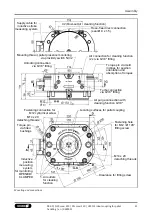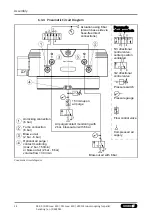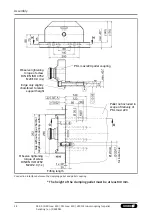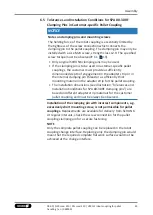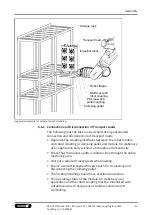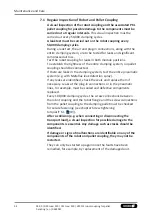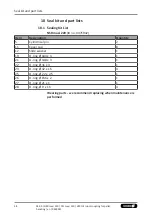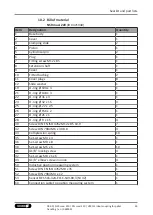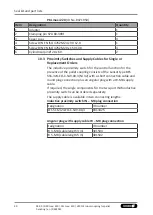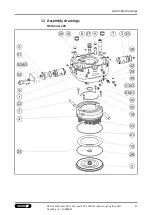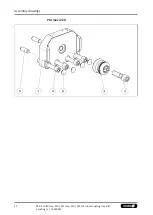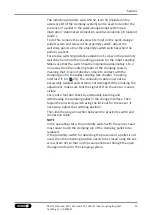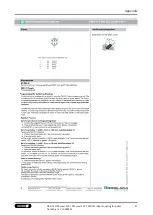
Maintenance and Care
34
09.00 | NSR maxi 220 / PKL maxi 220 | VERO-S robot coupling for pallet
handling | en | 0489051
7.1 Regular Inspection of Robot and Pallet Coupling
A visual inspection of the robot coupling and the associated PKL
pallet coupling for possible damage to the components must be
carried out at regular intervals.
This visual inspection must be
carried out every 50,000 clamping cycles.
A leak test must be carried out on the robot coupling every
50,000 clamping cycles.
During a leak test, the air and plug-in connections, along with the
entire clamping system, are to be tested for leaks and significant
compressed air loss.
Test the robot coupling for leaks in both module positions.
To establish the tightness of the entire clamping system, no pallet
coupling should be connected.
If there are leaks in the clamping system, test the entire pneumatic
system (e.g. with Metaflux leak detection spray).
If any leaks are identified, check the seals and replace them if
necessary. Leaks at the plug-in connections or in the pneumatic
lines, for example, must be sealed and defective components
replaced.
Every 100,000 clamping cycles, the screw connections between
the robot coupling and the robot flange and the screw connections
from the pallet coupling to the clamping pallet must be checked
for secure fastening (see chapter Screw tightening
torques
After a collision (e.g. when connecting or disconnecting the
transport load), a visual inspection for possible damage to the
components is essential. Any damage such as cracks should be
identified.
If damage or signs of malfunctions are identifiable on any of the
components of the robot and pallet coupling, they may not be
restarted.
They can only be started up again once the faults have been
remedied, for example, by replacement of the damaged unit.


